Using your intranet to improve the Employee Experience
Communications, HR, and leadership have changed over the past years, just as IT and the digital workplace have changed. Today intranets cover much more than just getting the corporate message out and can help master new challenges within these areas and help improve the employee experience.
For the last couple of years, the focus of internal communications has moved from enforcing messaging to empowering communication and amplifying ideas throughout the business. And in parallel, communications leaders have shifted from being editors to the role of being enablers.
The ways of working are becoming more hybrid, with employees working from various locations but still expecting a great user experience. Now, the challenges facing HR, from preboarding to offboarding, are harder than perhaps ever before. As a result, we have seen HR leaders shift from policy enforcement towards driving employee engagement.
In this article, we will present examples of how your intranet can help you facilitate these changes and help you:
- Drive introduction and onboarding of new talent.
- Publish best practices to support employees in daily work.
- Set up training programs to develop people.
- Understand and act on employee voice.
- Make sure to include all employees.
All screenshots are from an environment based on Omnia and Microsoft 365, but we believe that the information shared will be of value also if you are using other intranet products or employee experience platforms.
First intranet impressions count
When starting a new position, you are probably eager to take part in all information that can help you speed up an introduction period, and most likely you would expect the intranet to provide that service. You would probably be looking for information about the organization, who is who, locations, history, and similar content. So, when planning an intranet, organizations need to make sure that the solution will give a great first impression when welcoming new employees.
In this section, we have chosen three examples of solutions that we strongly recommend for this purpose. All three also have been designed in an appealing way knowing that you only get one chance to give a first impression.
The first one is a dynamic organization charts application that will allow end-users to browse business areas, departments, and teams to find general information, people, documents, and news related to a certain unit.
Our experience is that providing visual navigation is a great way to present any information – and especially when the structure has a meaning, as it does in organization charts.
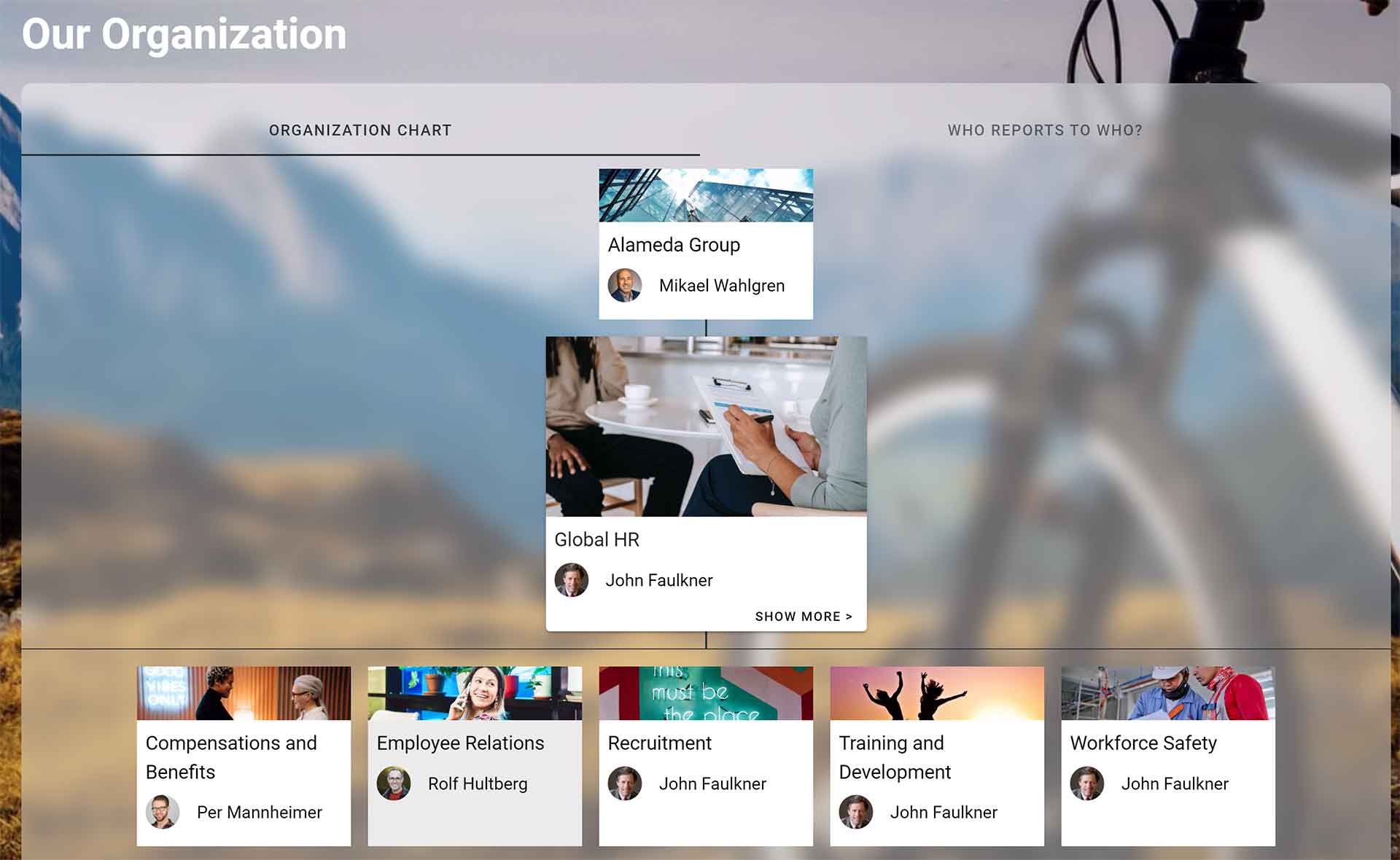
Image 1: Exploring the business using dynamic organization charts
With Omnia, the charts are fully dynamic and can be easily updated when the organization changes.
The second example is a landing page with representations for all offices within the organization. When clicking one of the locations the user will find a presentation of the workplace with content such as contacts, maps, weather, documents, and news articles related to the location.
Landing pages can be a helpful supplement to the mega menu, providing information on and navigation within a sub-section of the intranet. Our experience is that landing pages not only should provide innovative navigation solutions but also be used to implement a corporate profile. An example is this landing page showing all offices within a business with a suitable background image.
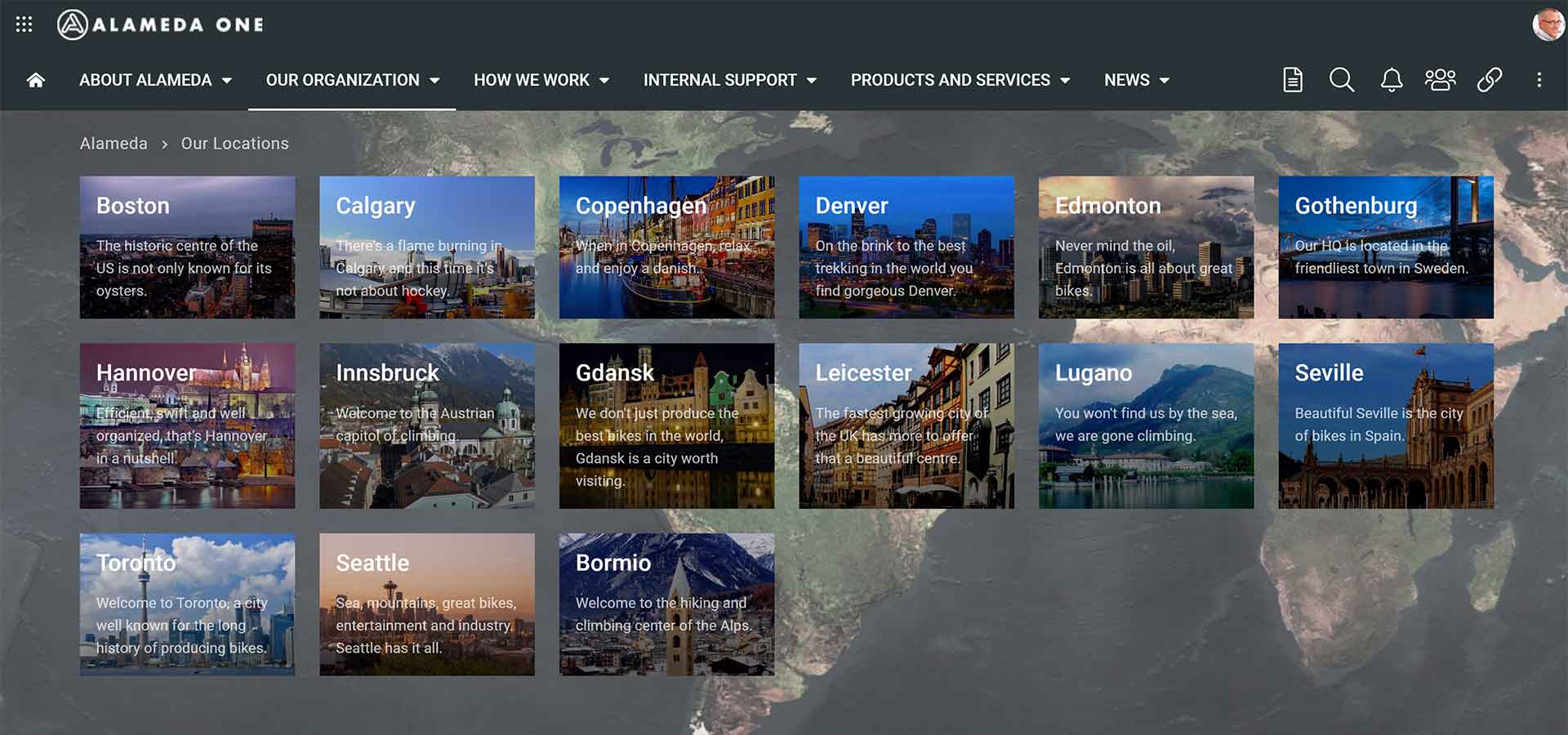
Image 2: Landing page for Our locations
The third example is a powerful who-is-who search application with an appealing presentation of employees, and with the possibility to find people based on skills, certifications, languages spoken, and other competencies.
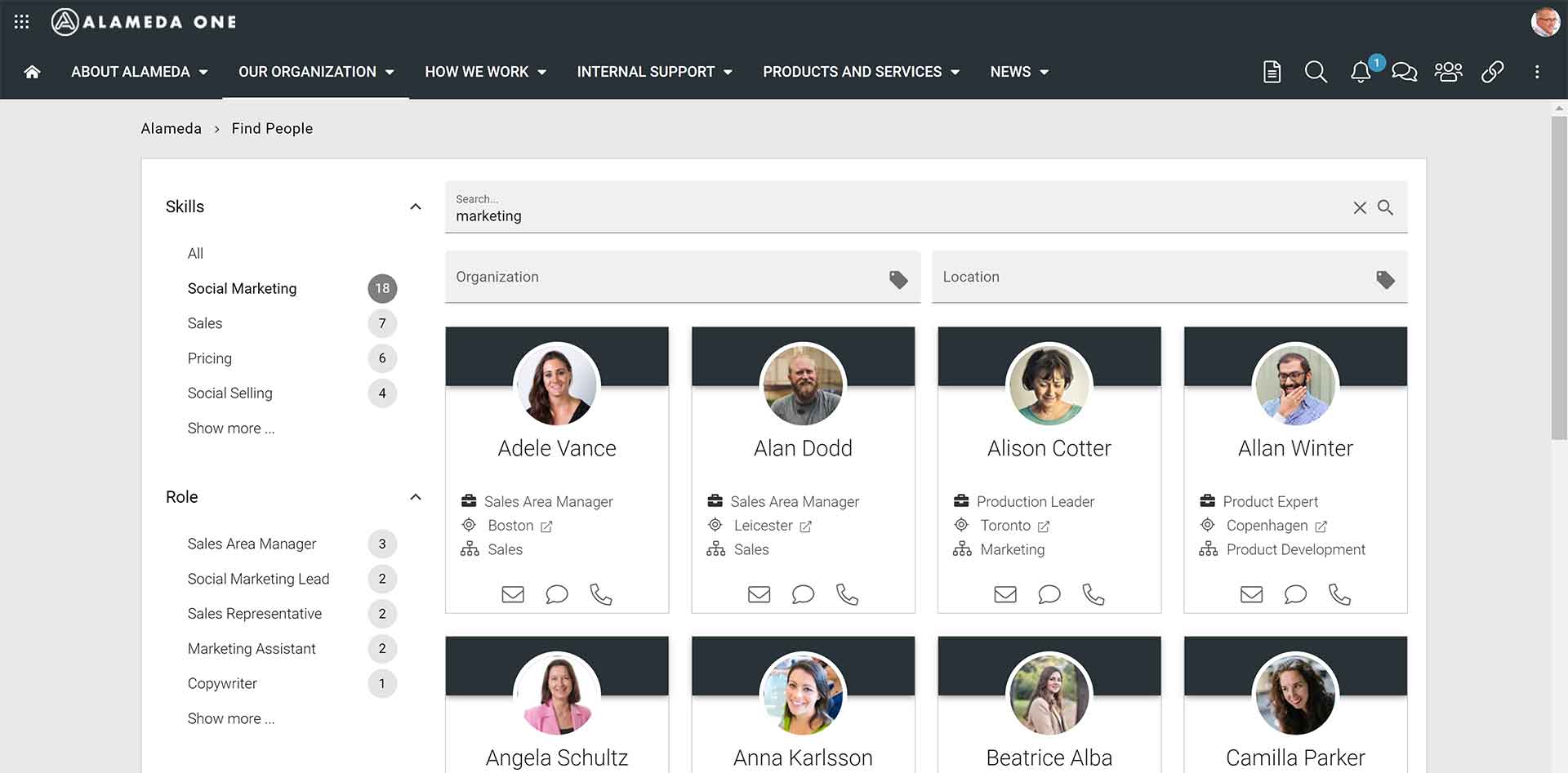
Image 3: Finding colleagues based on competences
On the search results page it is easy to contact any colleague via e-mail, Teams chat or Teams call, and you can also open each user profile to learn more on role, responsibilities, and knowledge.
Get up to speed with structured onboarding
New routines, new colleagues, new lunch place, new targets. Starting a new position can be overwhelming for anyone. Arriving at an organization that makes you feel welcome in a new team, comfortable in a new role, and that can offer a relevant introduction scheme will surely do the difference.
The introduction can cover areas such as mentorship, planned training, rotation, one-on-ones, and learning about the organizational culture. But no matter the content, we believe that it is of great value for any organization to have a structured onboarding process.
With Omnia, you can use the concept of sign-off requests for setting up onboarding templates that present a new employee with activities, learning, and information to take in as they go along. In the example below a manager is setting up an onboarding plan for two new hires, in this case consisting only of three activities.
When the request is submitted, the employees will receive a plan to follow that will present targets and expectations on onboarding.
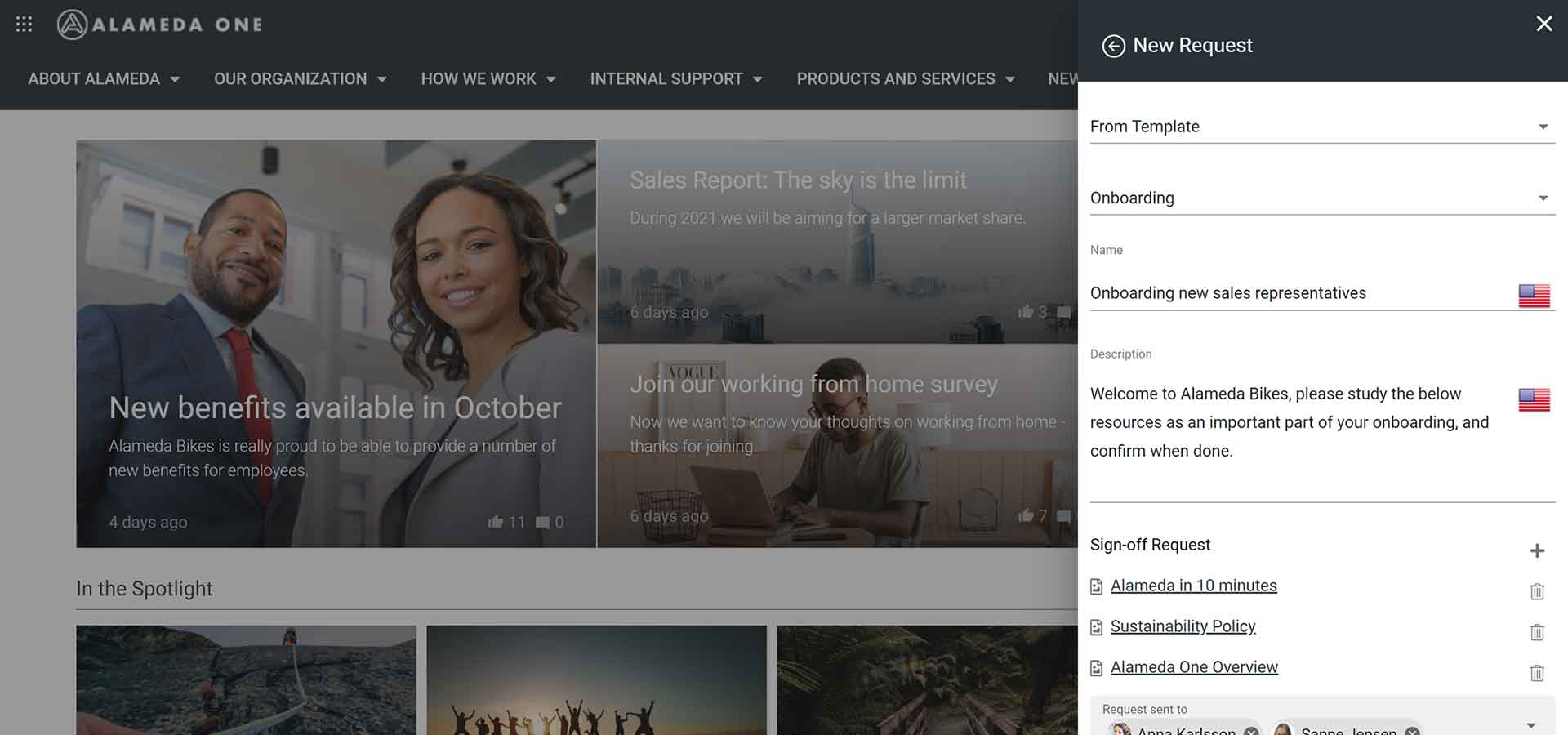
Image 4: Starting an onboarding request based on a template
The new employee can, in this case, follow the links to do internal courses, take part in introduction videos, learn about policies, and use the onboarding plan for reporting back as they tick off the actions.
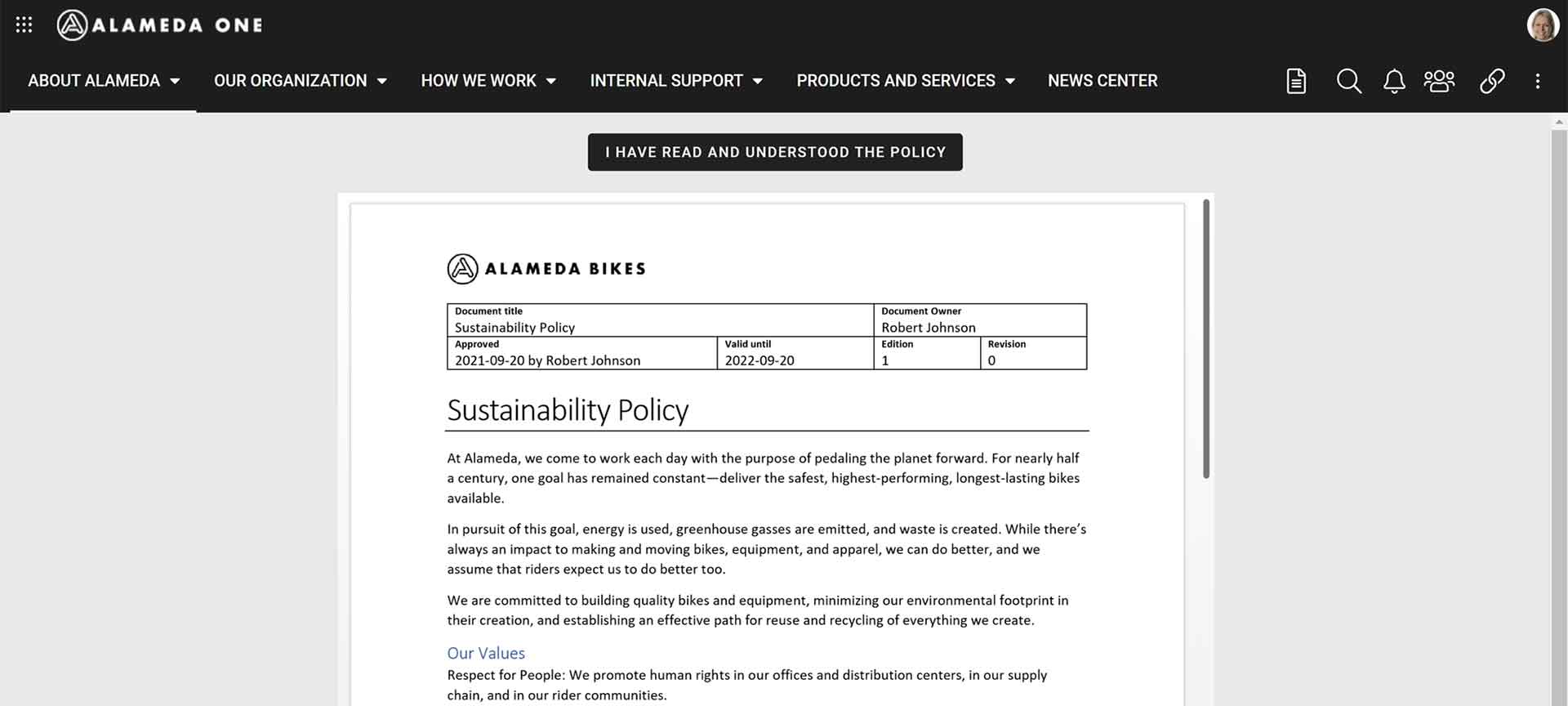
Image 5: Taking part in information and signing off request
Using your intranet for structured onboarding is a great idea. It will make employees feel valued and assured and will help bring employees up to speed in their new role.
Provide best practices to your workforce
When introducing new employees to a new role, there is no better way than having clear and systematic best practices to present how the organization wants activities and processes to be conducted. This can be done by defining, visualizing, and sharing processes that show and structure interrelated parts of the business.
For each process or activity, you can also provide steering and supporting information such as guidelines, work instructions, checklists, templates, and applications that should be used when completing a task.
With Omnia, you can build and publish business processes, add a description, process owner, instructions, tools, and other resources. The processes can be used for navigating to a certain phase or activity and take part of the information on ‘how we work’. In the example below, the project model for product development is shown along with related information.
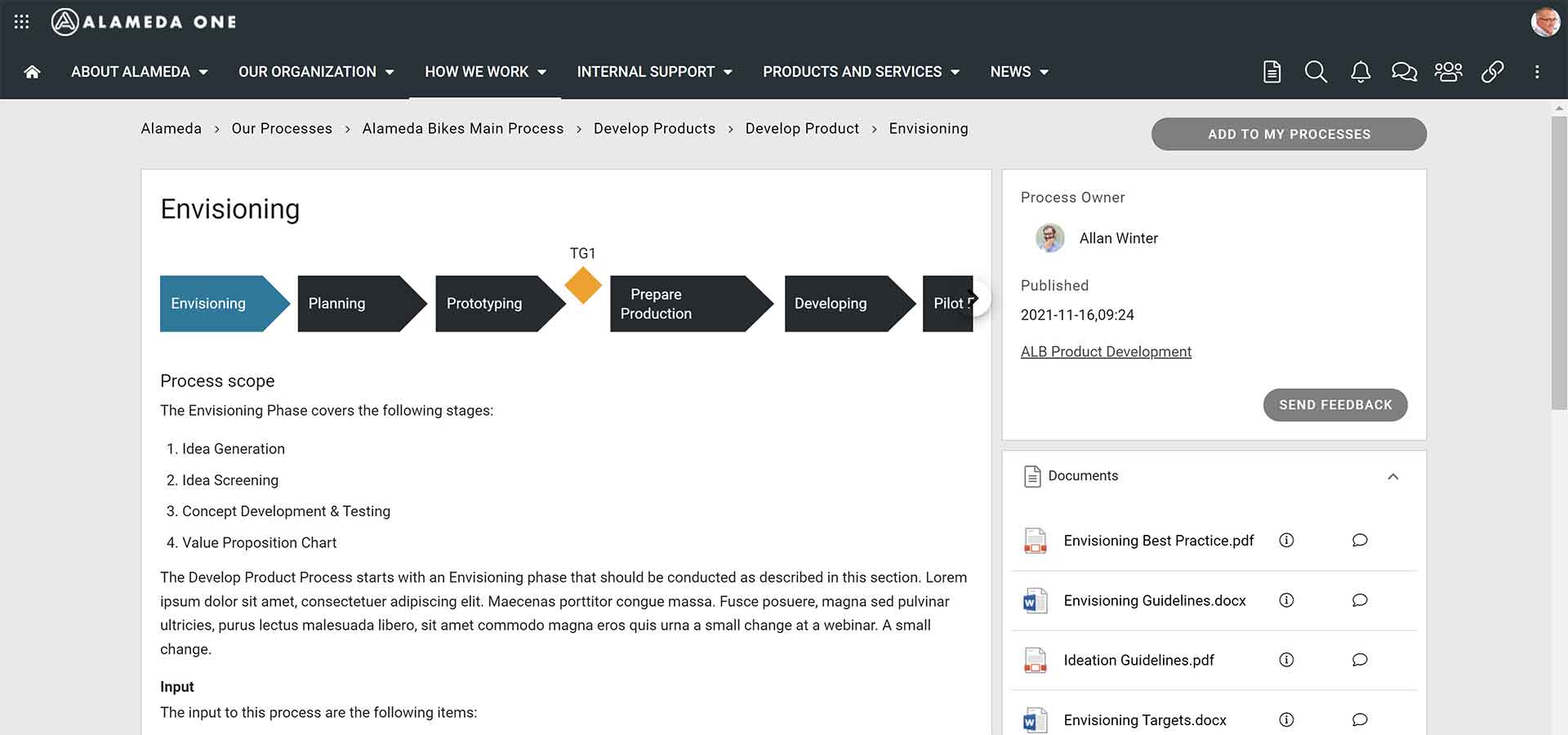
Image 6: Best practice for the Envisioning phase of a project model
The end-user also has the possibility to add the process to My Processes for quick navigation and to submit improvements suggestions and feedback as a basis for continuous improvements.
Train and develop your employees
Most people state that training programs improve their job performance. But there are also several other benefits of offering training and development programs for your staff, such as improved productivity, reduced employee turnover, and implementation of organizational culture. Therefore, our recommendation is to use your intranet to promote internal training.
With Omnia, you can set up a Learning Center displaying internal or external courses and making use of course administration for any internal events. You can also create and share micro-courses, short step-by-step courses with text, images, videos, and links, that employees can take on the intranet.
In the example below we the landing page of a learning center with courses split up into four areas. Also, note the tabs for the course calendar and a gallery of micro-courses.
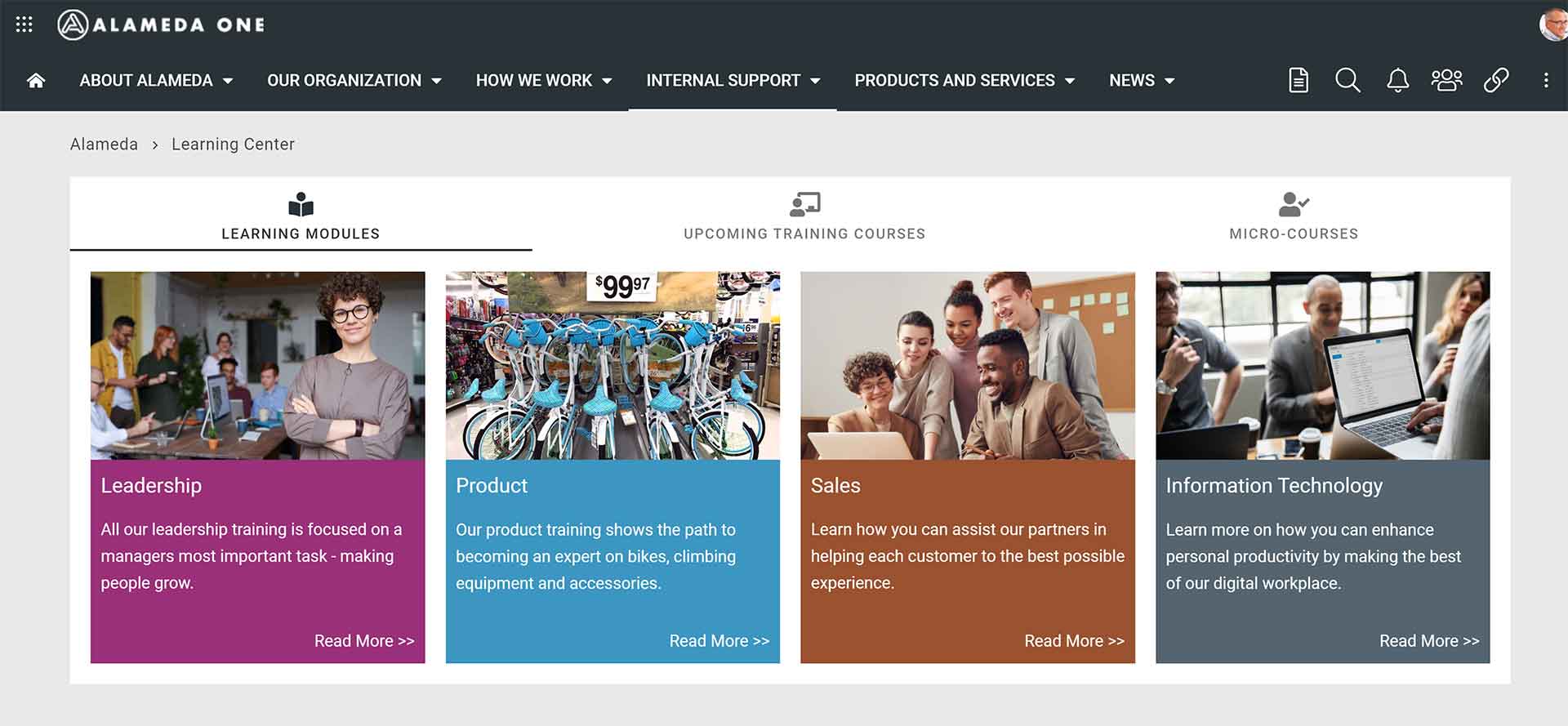
Image 7: Landing page for a Learning Center
The micro-courses are a modern learning experience, teaching skills that people can use straight away, that employees usually embrace and apply. In the example below, you can see how micro-courses might be structured and presented.
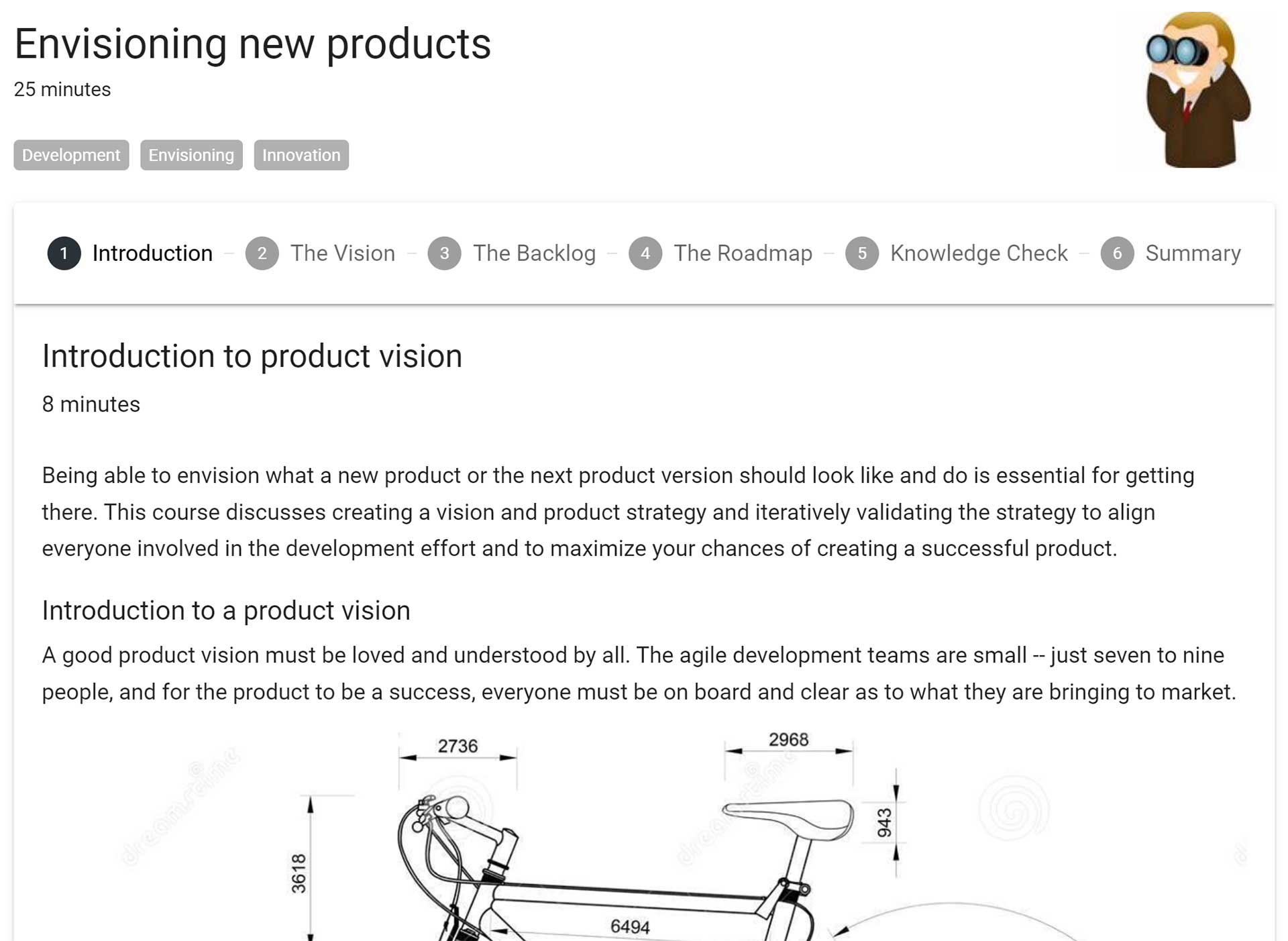
Image 8: Taking a micro-course on the intranet
Understanding employee voice
Nowadays, most job seekers wish to work for an organization that pays attention to their employees. Especially the upcoming generation of workers want to be able to speak their mind also at work, and they expect that their employer at least will take the time to listen. For any organization, it can be a success factor to understand attitudes and preferences of the workforce and we can surely use the intranet as a tool for achieving that.
A first example can be the common weekly poll or monthly question, providing a number of alternative answers and sharing the results with any users who submit their preferred option.
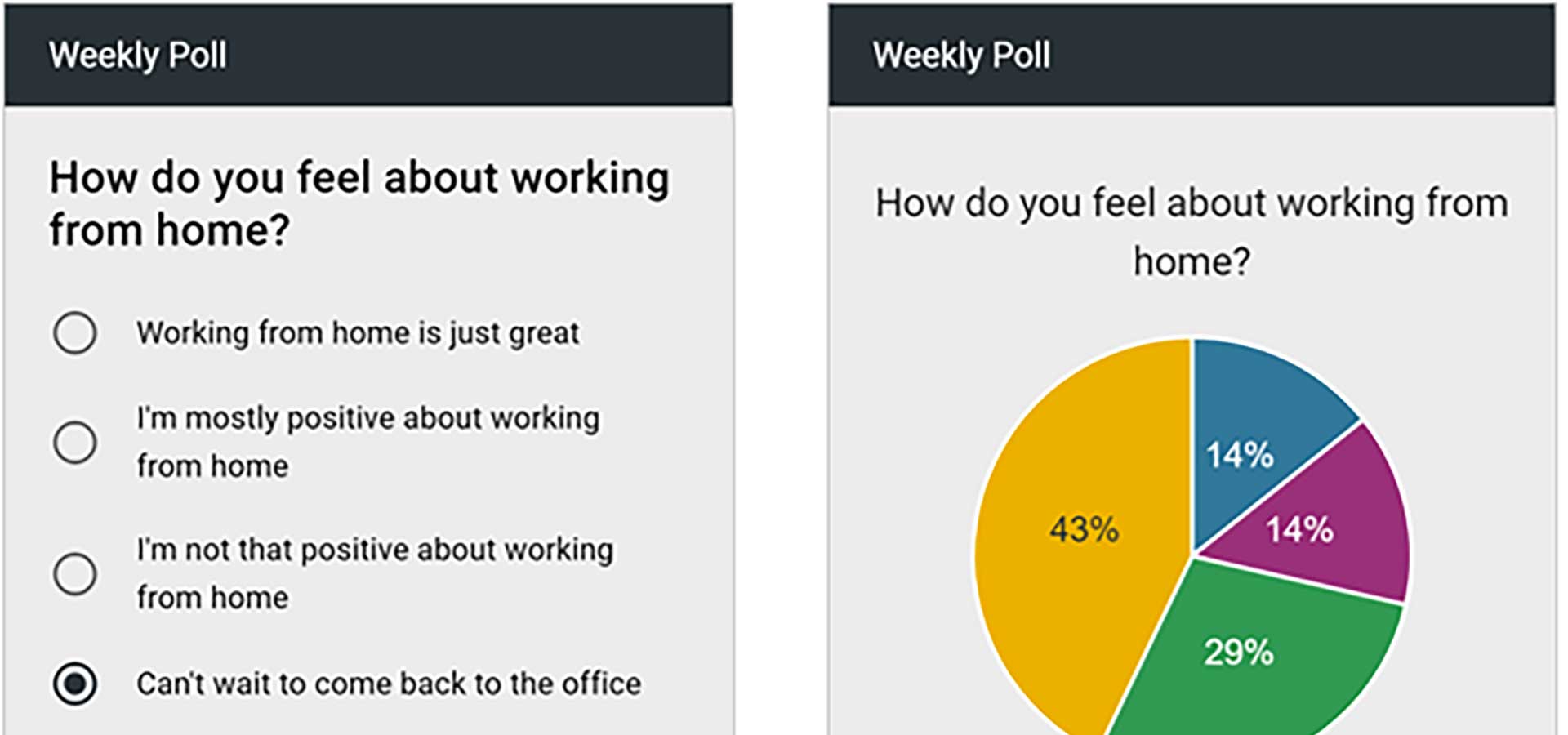
Image 9: Quick Poll
But the intranet could also be used as the platform for regular surveys, a yearly employee survey for the whole organization or a questionnaire targeted to people in a certain role. Administrators can set up and publish surveys, analyze results, create reports and repeat the survey when suitable.
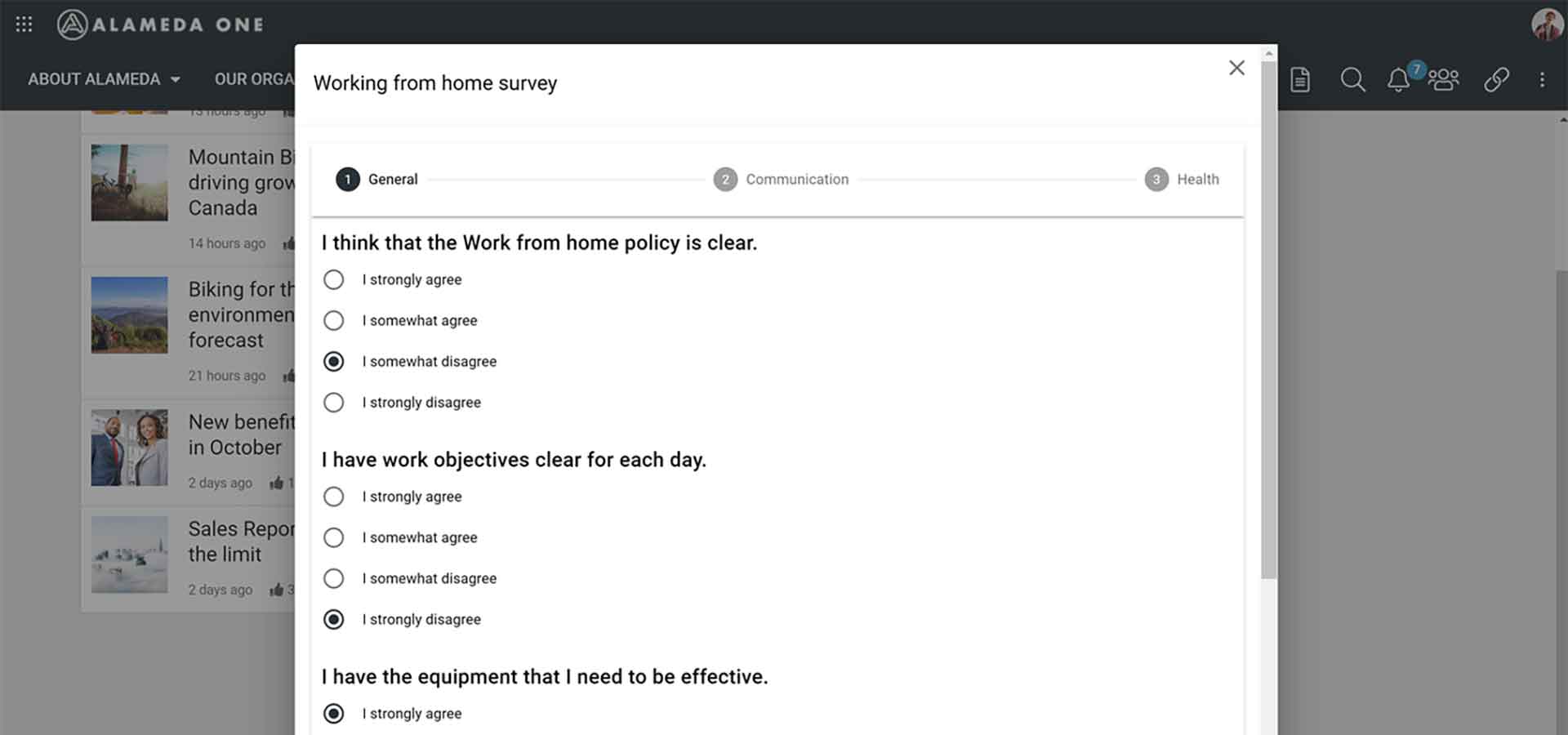
Image 10: Internal survey
With Omnia, you can also benefit from various possibilities of collecting user feedback. An end-user can submit feedback on processes, documents, web pages, and search results to assist in continuous improvements.
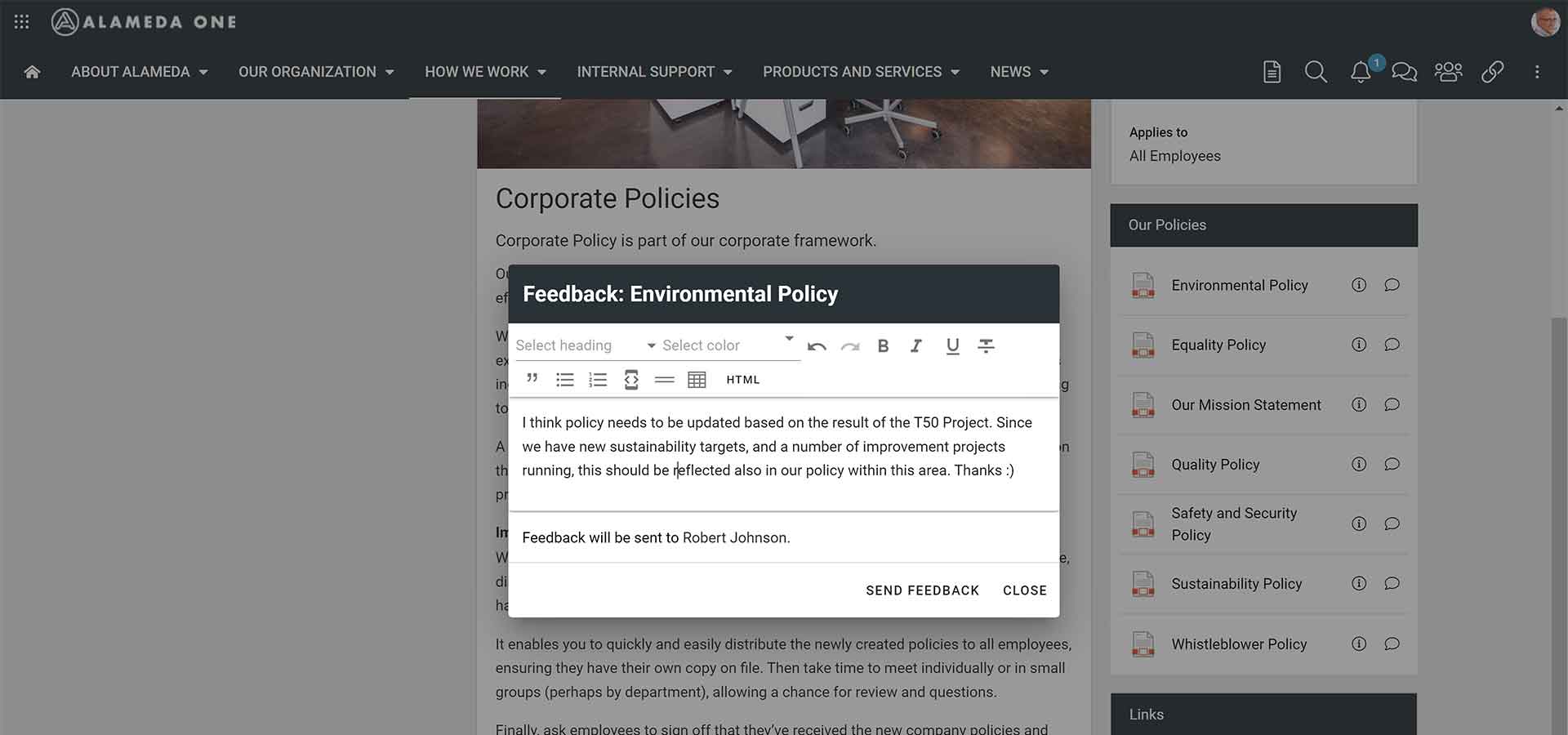
Image 11: Providing feedback on a corporate policy
Employees can also use social features to interact with content and colleagues, taking part in conversations or liking, commenting, sharing, and rating content.
There are several ways to use your intranet for understanding employee voice, and our strong recommendation is to implement this as a recurring activity.
Include all employees
For any organization that wants to be successful with its intranet, it is important to reach all employees with the solution. Of course, that includes the frontline workers that don’t have a PC, laptop, or tablet, some might not be comfortable with seeking information even if they get hold of a device, and in many cases might not even have a license to Microsoft 365. In this section, we will explore some possibilities of making sure that an intranet can reach all employees.
Let us start with any employees that question if they have the knowledge to find information on the intranet, maybe due to lack of practice. A nice feature for this group is to use tutorials to introduce end-users to the solution, set expectations, and explain how to carry out common tasks. Just like in the step-by-step guides that you swipe through when downloading a mobile app.
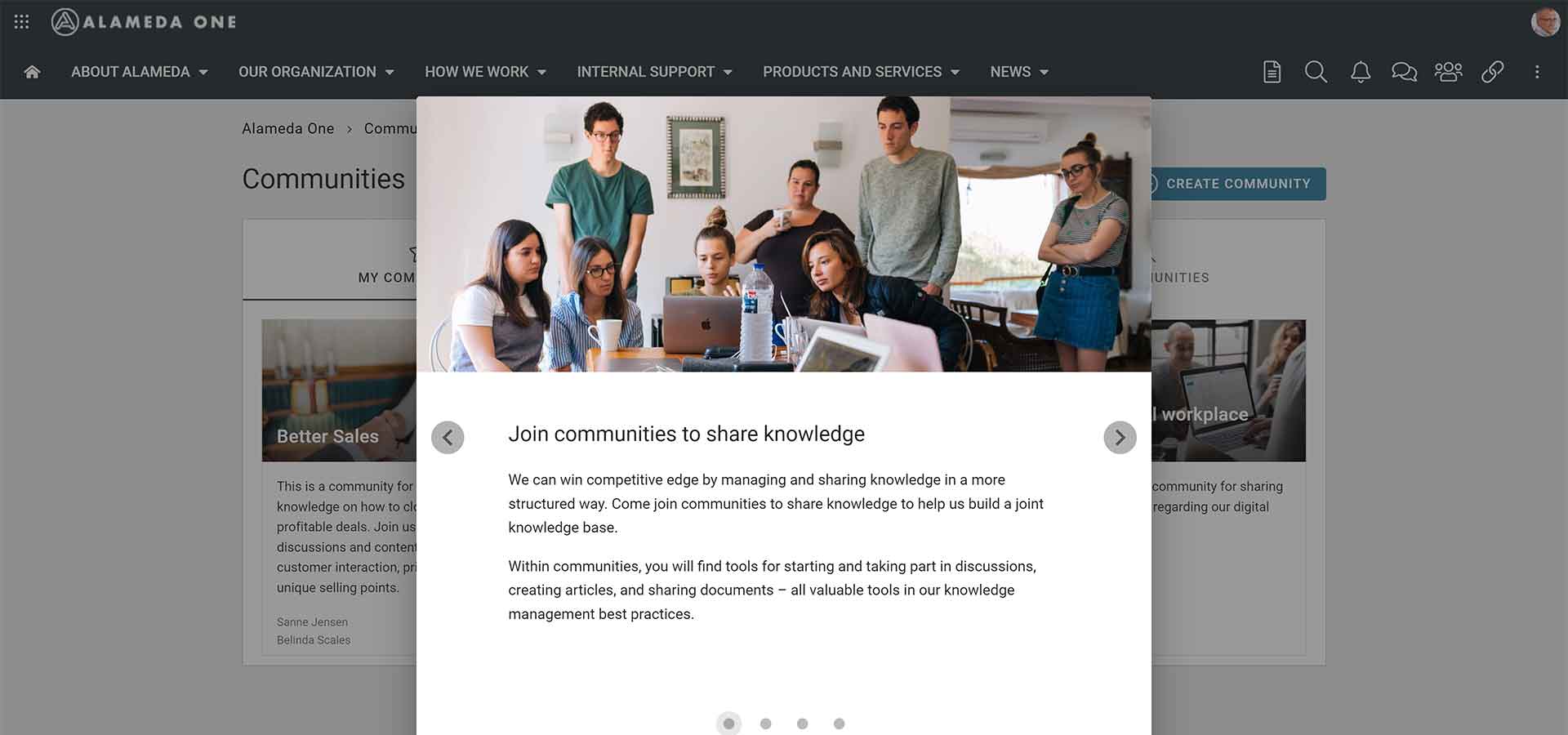
Image 12: Introducing knowledge sharing with a step-by-step tutorial
When using Omnia, you can mirror parts of your Microsoft 365 intranet also to employees that don’t have a M365 account. This means that you can cherry-pick information that is of value for frontline workers and create a portal just for this group. These users could then access information on any client that they have access to, and a common scenario here is to use the Omnia mobile app.
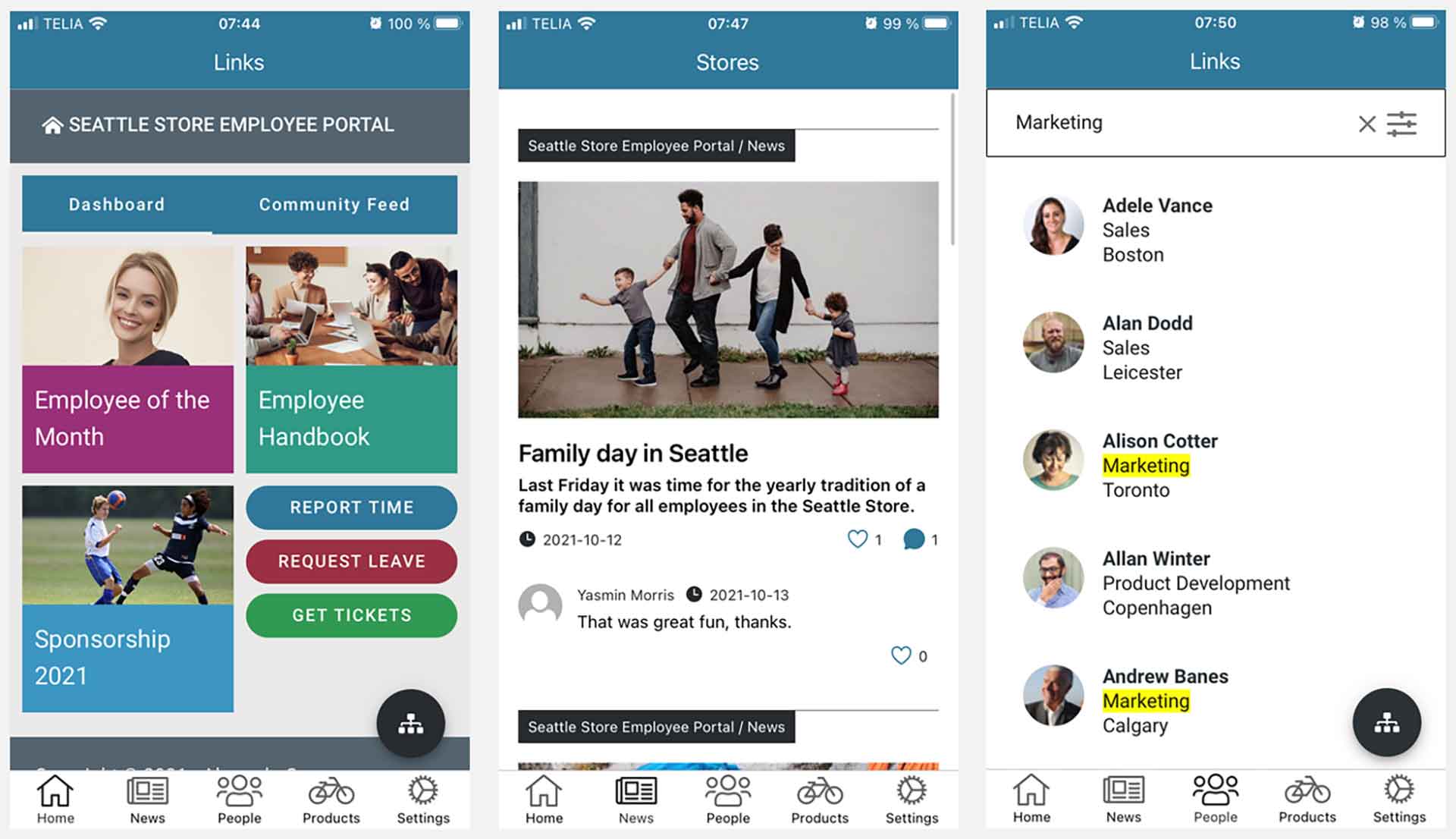
Image 13: Mobile App
In the example above, we see screenshots from a solution targeted to the ‘Seattle Store’ providing access to the employee handbook, a leave request form, store conversations, news, people search, and product search.
With Omnia, you can launch tutorials wherever you want, that can be on the start page, in a section of the solution, or when about to carry out a certain task, a leave request, or similar.
A great and easy way to drive adoption and usage of the intranet is to hook it up to Microsoft Teams. During the past three years we have seen the growth of Teams skyrocket and today this is the preferred client for daily work for many users. Omnia is well prepared for this scenario and can easily be ‘packaged’ as a Microsoft Teams App.
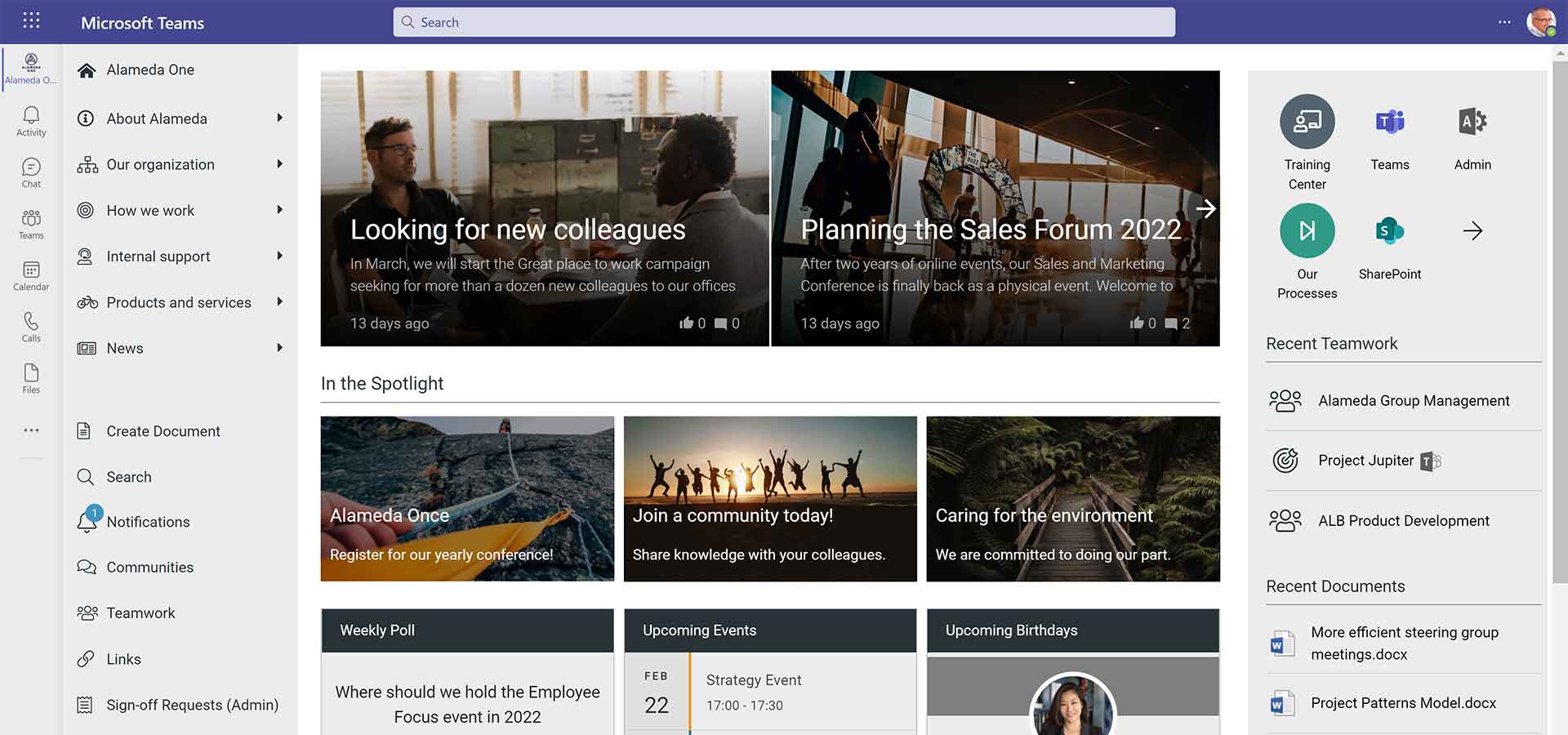
Image 14: Teams integration
In this example, we have arrived at the intranet start page and can access any content or resource just as in the browser experience.
Finally, when it comes to including all employees we also want to mention digital signage. The term refers to larger screens and monitors used to display news, messages, videos, images, and schedules and is often seen in public spaces, museums, arenas, and so forth. But this way of promoting information works well for internal communication as well.

Image 15: Digital Signage
With Omnia, you can set up a scope of articles, pages, videos, etc. that you want to display on one or several monitors, such as Leicester Office Canteen or Copenhagen Office Floor 2. The selected content will loop on the screen and will be available for anyone working close by. Digital signage can definitely help you raise the reach of your intranet.
Learn more on Employee Experience
If you wish to learn more about how you can use your intranet for driving the employee experience, we recommend that you sign up for our webinar How intranets support the HR and Leadership challenges of today.
You can also check out the on-demand webinar How intranets can support HR or study the subject by downloading the report Intranet and Employee Experience Platforms to take part in reviews of the best products in the market.
Since 2015 UK based ClearBox Consulting has published yearly reports on intranet products with the purpose to help workplace leaders, intranet managers, and IT professionals to understand the market and match products to priority requirements. The report is covering in-depth reviews of 20 products and once again Omnia comes out as a top-rated product.
Please get in touch if you wish to get a demo of how Omnia can help to win a competitive edge by improving employee experience.


